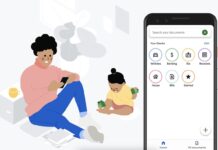In our existence, mobile applications, commonly referred to as “apps,” have revolutionized multiple aspects, leaving an indelible mark on the landscape. Notably, their influence on instruction and knowledge acquisition holds profound significance. With the pervasive presence of handheld gadgets such as smartphones and tablets, these devices have seamlessly transitioned into indispensable instruments facilitating educational pursuits and career advancement. Within the confines of this article, we shall delve into the pivotal role of mobile applications in the training domain. Additionally, we will expound upon the diverse array of app categories at one’s disposal to increase productivity of training
The Role of Mobile Applications in Training
Mobile applications have transformed the training industry, benefiting learners and organizations significantly. The key benefits can be grouped into four categories: accessibility, flexibility, interactivity, and personalization.
Accessibility
Mobile applications can be used anywhere, anytime. With a smartphone or a tablet, users have 24/7 access to training materials. It removes geographical and temporal constraints, allowing learning to occur at the user’s convenience.
For instance, even if you have only a phone and urgently need to complete and submit a paper, there is a solution. You can order an essay or paper from SpeedyPaper. This will save you hours of writing, proofreading, and organizing while guaranteeing a dependable outcome, all from the convenience of your phone.
Flexibility
Mobile applications offer flexibility in learning paths. Users can proceed at their own pace, repeating lessons as necessary or skipping content they’re already comfortable with. It is especially beneficial for adult learners with other responsibilities and commitments.
Interactivity
Many training apps incorporate quizzes, simulations, or gamified elements. These interactive features can enhance learner engagement and knowledge retention. They also often provide instant feedback, allowing learners to assess their progress and address misunderstandings immediately.
Personalization
Mobile apps can often adapt to the learner’s level of knowledge and learning style. They can provide personalized learning paths, recommend content based on user behaviour, and adjust the difficulty level based on the user’s progress.
Different Genres of Apps to Increase Productivity of Training
Mobile applications have been developed for a vast array of training areas. Here are some types of apps that are commonly used:
Educational apps
These are designed to provide academic learning resources and include platforms like Khan Academy, Coursera, and edX. They offer access to thousands of courses across various disciplines. These apps are equipped with interactive modules, videos, and quizzes and provide certifications on course completion. Both formal educational institutions and independent learners often use them.
Time management apps
Apps such as RescueTime, Toggl, and Evernote help users manage their time more effectively, making them highly valuable for training. These apps can track the time spent on different activities, provide task reminders, and help users organize their schedules. It can significantly increase productivity and efficiency during training.
Fitness and health apps
These are designed to aid physical training. Illustrative instances encompass MyFitnessPal, an app geared towards meticulously monitoring nutritional intake and dietary habits, and Strava, an application tailored for tracking running and cycling endeavors. And Headspace, a digital sanctuary dedicated to nurturing mental wellness.
Skill-specific training apps
These are apps designed to help users learn specific skills. For instance, Duolingo is used for language learning, Yousician for learning musical instruments, and Codecademy for programming. These apps provide targeted and focused training, making learning more efficient and effective.
Each app has a unique role in training, offering tailored solutions for different learning needs. As such, mobile apps have become an essential tool in modern training across various domains.
Challenges in Using Mobile Applications for Training
Despite the many benefits of using mobile applications for training, there are also several challenges that users might face. These can range from technical issues to personal and financial barriers.
Technical Challenges can include poor internet connectivity, disrupting access to online training applications, or incompatibility between the app and the user’s device.
- Learning Isolation: While mobile applications provide the convenience of individual learning, this can sometimes lead to isolation for the learner. The lack of interpersonal interaction, such as in a traditional classroom setting, might affect the learning experience for some individuals.
- Data Privacy and Security: As with any digital tool, mobile applications have potential privacy and security risks. Users might hesitate to share personal information, especially if the app lacks robust security measures.
- Cost: While many mobile applications are free, others might require a subscription fee to access premium features. This cost might be a barrier to using the application for some users.
These challenges underline the importance of careful planning and consideration when integrating mobile applications into a training routine. Despite these potential drawbacks, with the right strategies in place, the benefits of mobile applications in training can far outweigh the challenges.
Conclusion
In conclusion, mobile applications have proven to be transformative in training and development. They offer unprecedented accessibility and flexibility, allowing learners to engage with content in ways that align with their lifestyles and learning preferences. From educational apps that span many subjects to skill-specific tools that offer targeted training, these digital platforms are reshaping the learning and personal development landscape.

















